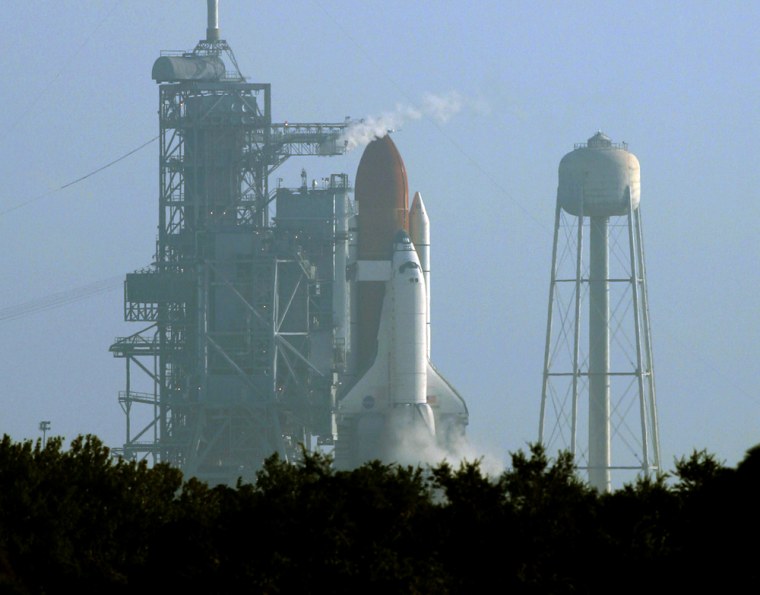For the space shuttle Atlantis, it’s try, try, try, try, try again.
NASA makes its fifth attempt to launch Atlantis at 11:15 a.m. EDT on Saturday. If the mission is scrubbed again, the space agency must abandon for a few weeks its efforts to send the shuttle off on a construction mission at the international space station.
NASA stopped Friday’s launch try only 45 minutes before its scheduled launch. This time it was a faulty fuel tank sensor — the same glitch that thwarted two previous missions. The launch delay cost NASA $616,000.
The shuttle’s external fuel tanks were filled as scheduled Saturday morning, exhibiting no problems with any sensor. Weather continued to look favorable, with only a 20 percent chance of storms interfering.
“Hi Mom,” astronaut Heidemarie Stefanyshyn-Piper said, waving to a television camera as she and her five crew mates finished dressing into orange flightsuits. They were driven to the launch pad in a specially equipped van and strapped into the shuttle. The hatch was sealed.
From the space station 220 miles above Earth, astronaut Jeff Williams inquired how launch preparations were going.
“Hopefully, we’ll have some visitors heading on their way to you before long,” Mission Control in Houston told him.
Atlantis, which was supposed to launch Aug. 27, has also been kept earthbound by a lightning strike to the launch pad, Tropical Storm Ernesto and a fuel cell motor glitch. The mission was originally scheduled for May 2003 but was postponed by the 2003 Columbia accident.
Saturday is the last time NASA can launch Atlantis before it has to go to the back of the line, behind a Russian Soyuz capsule that is slated for liftoff Sept. 18 on a flight to the space station. Atlantis and the Soyuz cannot be at the space station at the same time.
Atlantis would have to wait until at least late September for another attempt, and even then, NASA would have to waive a rule that says launches must be conducted in daylight so that the spaceship can be photographed for signs of damage.
Friday’s launch was scrubbed even after the astronauts strapped in and the hatch was sealed because a sensor in the hydrogen fuel tank gave an abnormal reading as the shuttle was being fueled.
After sensor problems in previous flights, NASA created a new rule requiring a stand-down of 24 hours when one of the tank’s four engine cutoff sensors doesn’t work properly. The delay would allow engineers to gather more data on the problem.
“We had a lot of discussion. ... We follow the rules,” launch director Mike Leinbach radioed Atlantis’ crew, notifying them about the scrub.
“We understand. We concur 100 percent,” responded Atlantis’ commander, Brent Jett. “It’s the right thing to do.”
Slideshow 12 photos
Month in Space: January 2014
Aboard Atlantis is one of the heaviest payloads ever carried into space — 17½ tons of girders that will be added to the half-built space station. It includes two solar arrays that will produce electricity for the orbiting outpost.
Atlantis’ crew members will make three spacewalks during the 11-day mission to install the $372 million addition.
Construction on the space station has been at a standstill ever since Columbia broke apart on its return home in 2003, killing its seven astronauts.

